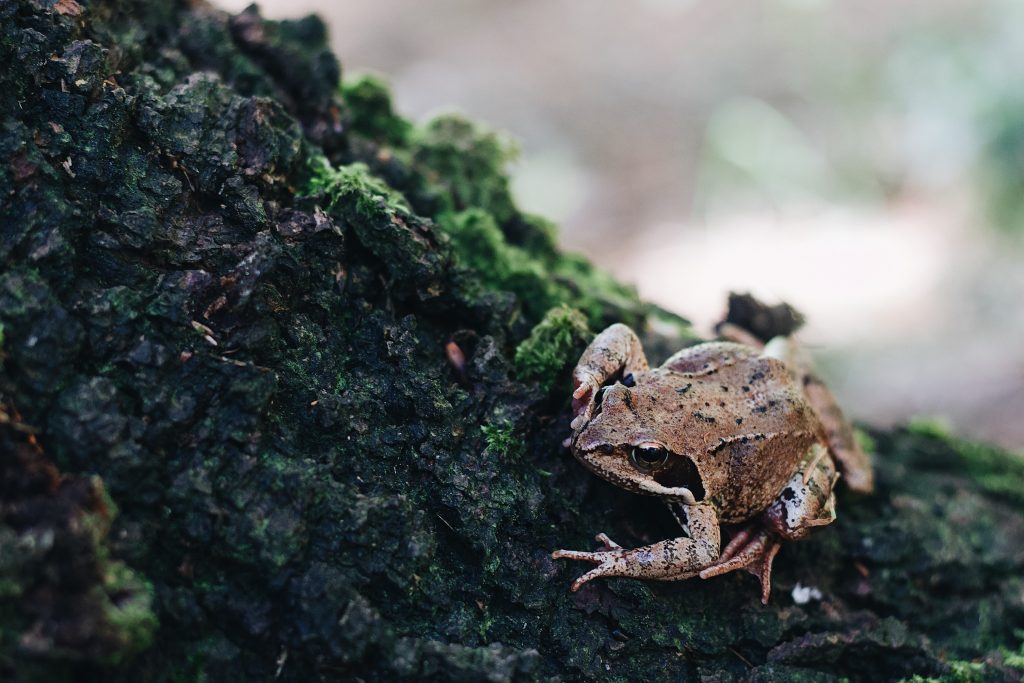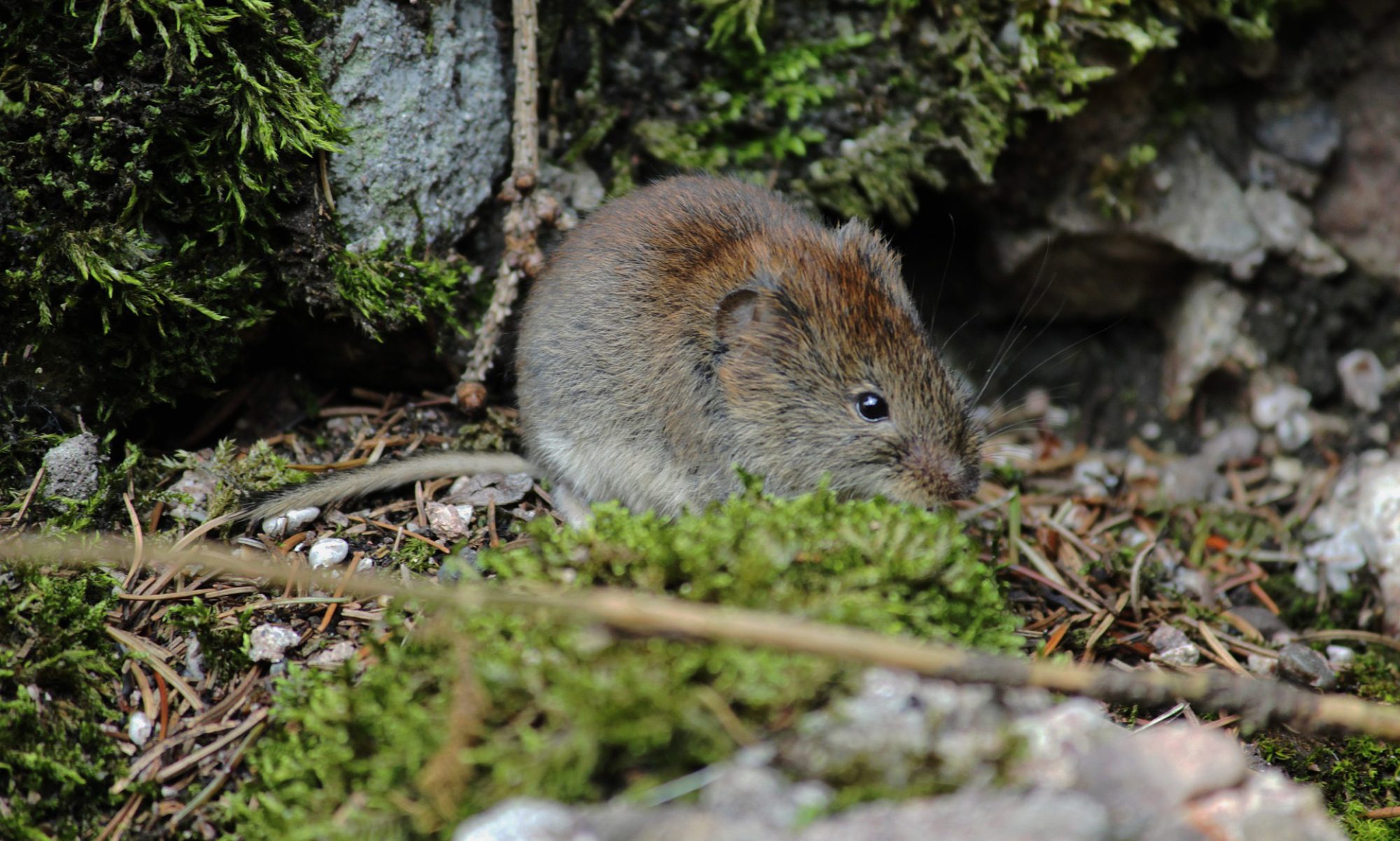
During the last month, the warm weather has sent frogs in search of somewhere to cool down – and should you have a suitable pond in your garden, frogs will discover it surprisingly rapidly. We recently built a small garden pond, and within three weeks, we found a little juvenile frog enjoying a swim. The common frog (Rana temporaria) is one of two native frog species in mainland Britain; the other is the pool frog (Pelophylax lessonae). The native populations of pool frog became extinct a few decades ago, but there have been attempts at re-introducing it. There is another native UK species, the agile frog (Rana dalmatina), but it is only native to, and found in, one site in Jersey.
How do I identify one?
Common frogs have a distinct rounded snout, with a dark ‘mask’ mark behind their eyes. They have long hind legs, striped brown. They have rounder pupils than toads, and smooth skin. Their eyes are more widely set than those of other frog species found in the UK. They can be various different colours, including light brown, olive-brown, greenish-brown, grey, and black. Females sometimes have red-tinged flanks. The common frog doesn’t usually have any bright green colouration, unlike some other frogs living in the UK.
Where do they live?
Common frogs are widespread across the UK and Ireland. During the last half of the twentieth century, there was a dramatic fall in frog populations in the countryside, due to intensive agriculture and habitat loss. Fortunately, frogs have gratefully taken to living in garden ponds. Indeed, garden ponds have helped hugely in counteracting the reduction in frog populations.
Frogs hibernate in mud at the bottom of ponds, or under log piles. They tend to hibernate from October until the breeding season, which can start as early as January. They breed soon after emerging from hibernation. Frogs lay clumps of frogspawn in sunny, shallow parts of lakes and ponds. Once the tadpoles have metamorphosed into froglets, they leave ponds during May to September, sometimes dispersing quite a distance from their native pond. They love any damp areas of countryside, including grassland, marshes, parks, hedgerows and moorland. Though, in warm, dry weather, they will come back to ponds, in order to keep their skin moist.
How can I encourage them?
As you’ll know, ponds are a real gift to frogs. But make sure your pond has the right conditions. These include gently sloping sides, some plant cover or shelter around the pond’s edges, and some oxygenating plants to improve the water quality. As ever, log piles provide great hideaway places for frogs when they’re away from the pond.
Where can I spot one?
You are most likely to spot frogs in breeding season, which is from January to March, when males and females congregate at breeding ponds. These ponds are quite noisy and animated, with numerous males croaking loudly and jostling for position. Common frogs are – as their name suggests – often encountered in gardens, particularly if you have a pond. They aren’t limited to ponds, though, and can also be found in damp grassy fields and woodlands.
Did you know?
Like other amphibians, frogs can ‘breathe’ through their skin, as well as using their lungs. This lets them take in oxygen while they’re underwater. Their skin is coated in a mucus layer which keeps the skin wet, as it must be in order to absorb oxygen.
Help look after our frogs!
Remember to keep an eye out for the health of frogs (or other amphibians!) you see in your garden. The common frog can be susceptible to a disease called Ranavirus, which can decimate populations of frogs. Most outbreaks happen in summer, in hot weather. If the frogs look lethargic, unusually thin, or have ulcers or odd red patches on their skin, they might have this disease. Please see the Garden Wildlife Health website for helpful info: https://www.gardenwildlifehealth.org/portfolio/ranavirus-disease/
Please send us any photos of frogs you find in your garden, or on your travels!

